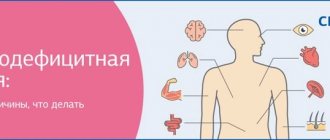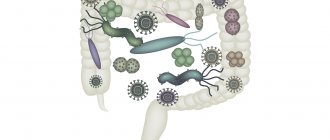Anorexia: causes, symptoms, treatment, prevention
Description of the problem - characteristics of anorexia nervosa, how to identify the disease, diagnostic methods. Treatment of neuropsychiatric disorders, rehabilitation and prevention.
Nutrition is the basis for maintaining health and the harmonious functioning of all processes in the body. Every year the media penetrate more deeply into the everyday life of citizens and form new trends. At the end of the 20th century, it became fashionable to be thin, and new beauty standards emerged. For most people, meeting the requirements of society is a rule that provides freedom, erasing boundaries and boundaries. The desire of both women and men to lose weight in order to follow the canons of attractiveness has become justified, but this new trend also has an extreme - anorexia nervosa.
Characteristics of anorexia
Anorexia nervosa is considered a mental disorder. When gaining weight, a person unconsciously refuses to accept his own body. First, there is dissatisfaction with one’s appearance, reflection in the mirror. The patient tries to correct the situation by losing weight, but chooses the wrong path - refusing to eat, strict diets, physical activity without reasonable restrictions, using appetite suppressants, diuretics, laxatives, and also resorting to inducing vomiting after eating. So the patient achieves the desired result, but it no longer satisfies him. With the correct proportions, a person considers himself obese and continues weight loss measures. Due to improper eating behavior, all organs and systems of the body suffer. First of all, the functioning of the nervous system, gastrointestinal tract, urine and genital area is disrupted, and immunity is reduced.
The patient looks exhausted, excessive thinness is perceived by him as beauty, but disturbances in the functioning of the body overshadow life.
Methods for diagnosing anorexia nervosa
Early diagnosis of anorexia nervosa is difficult due to the fact that patients carefully hide their condition. There are frequent cases of erroneous diagnosis and long-term observation and research of this category of patients by therapists and gastroenterologists, and sometimes surgical intervention. Difficulties in making a diagnosis are also due to the lack of a critical attitude towards one’s condition. Based on this, the American Psychiatric Association has proposed a number of criteria based on which anorexia nervosa can be diagnosed. These include the fear of “getting better”, which does not disappear even in the stage of exhaustion; a violation of the perception of one’s own body, when, having a normal weight, patients consider themselves “terribly fat”; refusal to increase one's own body weight above the calculated minimum normal for a given organism; absence of menstruation.
Among patients suffering from anorexia nervosa, there are two categories - the first includes patients who limit food intake, the second includes those who, after eating, use vomiting agents, laxatives and diuretics, etc., calling these procedures “self-cleaning” "
The absence of menstruation in women, which is one of the diagnostic criteria for anorexia nervosa, indicates the presence of hypothalamic disorders, and is reflected in a blood test as a decrease in the level of luteotropic and follicle-stimulating hormones. In patients with anorexia nervosa, the level of gonadotropic hormones is close to that in the body of teenage girls. In addition, there is a decrease in the level of estradiol and an increase in the concentration of testosterone in the blood serum, which is associated with changes in enzyme systems and the metabolism of these steroid hormones as a result of general exhaustion of the body. In patients with amenorrhea, symptoms of osteoporosis are observed.
Hormones produced by the adrenal cortex also undergo a number of changes in the state of anorexia nervosa. Thus, in particular, the level of cortisol increases, despite the fact that the level of adrenocorticotropic hormone remains unchanged. When trying to suppress the production of cortisol, a test with the introduction of dexamethasone has no effect.
As a result of constant refusal to eat, patients suffer from chronic hypoglycemia, which in some cases ends in the development of hypoglycemic coma. Kidney function also changes, in particular, minute diuresis, endogenous creatinine clearance, and urinary excretion of electrolytes decrease. The enzyme system of the liver also undergoes changes. The volume of circulating blood in the body of patients decreases, however, when calculated per kilogram of actual body weight, hypervolemia may be observed, so the prescription of intravenous infusions should be done with caution. Electrolyte disturbances in particularly advanced cases can lead to sudden death of the patient.
True anorexia nervosa should be differentiated from a number of mental pathologies (neuroses, schizophrenia, depressive disorders), with Simmonds syndrome and adrenal insufficiency.
Symptoms of anorexia
In medical practice, a classification of signs has been developed by which it is easy to recognize the onset of the disease and its course. They allow you to understand how far anorexia has gone, how to prevent the consequences and complications of the disease.
The main features include:
- dissatisfaction with external data, constant feeling of fullness, excess weight, non-acceptance of proportions;
- the patient denies the presence of problems and refuses treatment;
- limits himself to food, reduces portions, refuses foods;
- sleeps poorly, insomnia appears;
- depression, touchiness, apathy, irritability, aggression in communication with others are observed;
- afraid of gaining weight, exceeding the weight limit;
- plays sports intensively, increasing physical activity each time;
- refuses to attend events where food will be eaten;
- visits the toilet frequently;
- induces vomiting to remove food from the stomach;
- excessively addicted to diets;
- due to exhaustion, performance decreases, attention and concentration on usual activities are impaired.
Signs of anorexia appear at different stages of the disease. A person in need of therapeutic intervention will not consult a doctor on his own; he himself will not be able to begin treatment for anorexia, due to lack of awareness of problematic issues. It is important that relatives and close people notice negative changes and convince the patient to visit a specialist at an early stage.
Symptoms of anorexia nervosa vary depending on gender. According to statistics, women are more often affected by the disorder, but in practice it is also diagnosed in men.
Signals of anorexia in girls:
- the skin becomes dry, the face becomes sallow;
- hair and nails look painful;
- frequent migraines;
- dystrophy of internal organs develops;
- absence of menstruation or its irregularity, pain;
- inability to become pregnant and give birth;
- exhaustion.
In most cases, the pathology develops in girls during adolescence, when hormonal characteristics appear, emotional outbursts are visible, frequent mood swings, and the psyche is unstable.
Young people are not as likely to be at risk, but are also susceptible to the syndrome. They are characterized by:
- hair loss on the head;
- chronic fatigue and irritability;
- desire for a strong increase in physical activity;
- tendency to drink alcohol;
- decreased sexual desire and potency.
As anorexia nervosa progresses, the number of symptoms increases. If a visit to the clinic does not take place in a timely manner, or medical and psychological assistance is not provided, the changes become irreversible, which leads to death.
Anorexia: symptoms and treatment
Even in families where it is customary to take care of each other, the painful manifestations of this eating disorder may not be immediately noticed. Slenderness and thinness as indicators of success force representatives of the middle or upper socio-economic class to “adjust” their parameters to certain standards. Unfortunately, this trend also negatively affects children and adolescents: parents either do not pay attention to weight loss, because they consider slimness an indicator of health, or speak negatively about their body weight and eating habits, strongly recommending dieting.
The desire to imitate a certain idol with a certain type of appearance plays a negative role in the development of the disease. Dissatisfaction with oneself against the background of the desire for “perfection” triggers the development of a mental disorder.
What should you look for to suspect anorexia? In this case, the RPP patient:
- loses weight, looks pale, exhausted
- perceives himself as a complete person;
- cannot be convinced that he looks thin and emaciated;
- refuses to eat food or a number of foods;
- cooks for himself alone and eats separately;
- creates caches with food supplies;
- talks more and more about diet, weight loss;
- after eating, he locks himself in the bathroom or toilet;
- isolates himself from loved ones;
- spends time in thematic groups;
- suffers from episodes of depression, anger, irritability.
What will this look like in everyday life?
Close people notice that the girl is losing weight. At first, a patient with anorexia may choose revealing clothing that “flavours” their figure. If the disease has been going on for a long time, then fashionable sets are often replaced by baggy things (sweatshirts, hoodies, long T-shirts). They hide pronounced exhaustion, long sleeves help hide cuts, burns, and bruises.
When questioned about weight loss, such patients report being overweight and wanting to “lose a little more weight to achieve the ideal.” They assure others that they are not starving, but care about their health and that they do not need treatment for anorexia.
The eating behavior of such patients has its own characteristics. Girls stop eating with other people. This manifests itself in the refusal of family dinners and holiday events. When living together with their parents, patients purchase food on their own or ask to buy certain types of food for them according to a list. Patients are devoting more and more time to studying culinary recipes. They start preparing complex dishes for the rest of the family, without even trying their creations.
The process of eating food is surrounded by rituals and has its own characteristics: patients eat while standing, using small dishes. The permitted solid dish is cut into small pieces and chewed thoroughly; liquid or semi-liquid food is consumed with a teaspoon. This is how patients stretch out their meals as much as possible, creating the illusion that the amount of food was sufficient.
Patients do not like anyone to watch them eat or prepare meals for themselves to maintain slimness. The presence of loved ones at such moments causes them anxiety and irritation.
The circle of interests is narrowing. The patients’ speech increasingly includes references to diets and the topic of excess weight. They study food energy tables, read labels on diet foods or snacks with morbid attention, and always know how many calories are in each serving of food. Such encyclopedic knowledge of cooking may command respect from others, although when combined with other symptoms, it is a sign that it is necessary to pay attention to health and begin treatment for anorexia.
In a number of girls, the disease is accompanied by attacks of bulimia. After an episode of gluttony, patients try to get rid of consumed food by inducing vomiting, taking diuretics or laxatives. From the outside it looks like a desire for privacy in the bathroom after eating, frequent visits to the ladies' room.
With the development of bulimia against the background of anorexia, such patients create stocks of food in their room. As a rule, these are fast food, sweets that can be stored for a long time without refrigeration. They hide these foods from other family members. Patients with anorexia not only consume them during bouts of binge eating. They “collect”, take photographs of their treasures and can post them in thematic groups on social networks.
There are entire Internet communities whose members tell each other what methods help to lose weight, how you can deceive others, creating the illusion of well-being and eating enough food. Active visitors support the desire to achieve the lowest possible weight in others and encourage the use of various methods to achieve their goal. The discovery of belonging to such a community in a person suffering from eating disorder is the basis for immediate contact with a specialist. Effective treatment of anorexia in Moscow can begin with one consultation with a psychotherapist or calling a psychiatrist at home if you refuse to visit the clinic. It is important to understand what will happen if the patient's family decides to refuse medical care.
24/7 CONSULTATION BY PHONE: +7
Why does anorexia develop?
The causes of anorexia go deep into individual personality traits. Nervous pathology is detected in people who are insecure and have low self-esteem. Each case is considered by a psychiatrist on an individual basis, because each patient has a unique life history and a burden of problems dating back to childhood.
Anorexia is caused by:
- Unfavorable genetic factors - in the pedigree, the ancestors suffered from exhaustion, which was passed on to their descendants. Its activation occurs under severe stress, unsuccessful weight loss, or incorrect daily schedule.
- Obesity in childhood - being overweight for a long time provokes a desire to return to normal, but with negative experiences there is a possibility of developing anorexia.
- The onset of the first menstruation earlier than physiologically planned. Subsequently, difficulties are discovered in the release of the hormones serotonin, norepinephrine, and dopamine, which are responsible for eating behavior.
- Personal aspects - dislike for oneself, non-acceptance of the body, weight, imbalance in emotions are formed under the influence of traumatic life circumstances. For example, lack of support from mother and father when a minor is trying to find his own style and image. Students often experience depression due to bullying from peers due to excess weight, as a result of which there is a strong desire to lose weight without noticing global changes.
- Fashion for thinness, broadcasting trends in the media.
Identifying cause-and-effect relationships is a step towards proper treatment. The situation is complicated by the fact that not only the employee of the healthcare institution, but also the patient must be aware of the seriousness. If this condition is not met, measures to restore lost functions will remain ineffective.
Types of anorexia
In medicine, there are several types of disorder. They differ in the reasons that provoked the appearance of anorexia.
Types of anorexia include:
- nervous (self-limitation is realized consciously, fear of gaining weight, which is considered unnecessary for the anatomy, there is no correct perception of appearance);
- medicinal (with excessive use of psychostimulants and antidepressants);
- mental (the feeling of hunger is lost due to disruptions in brain dynamics, accompanied by depression, schizophrenia, paranoia);
- symptomatic (the main reason does not lie in mental disorders, the woman suffers from somatic ailments in gynecology, lung function, hormones, intestines).
The type of treatment used depends on the type of anorexia. Anorexia nervosa and mental anorexia are similar, but have fundamental differences in characteristics. The primary task is to separate them, because if there are diagnoses of schizophrenia and paranoia, serious treatment is necessary, including hospitalization.
Stages of anorexia
The degrees of anorexia involve several stages of development, from its beginning to its end, if treatment is not implemented:
- At the first stage, discomfort is felt from the appearance, a feeling of fullness and excess weight arises. In the subconscious, the usual aspects of eating behavior are being transformed into new ones aimed at losing weight. Even if there are actually no extra pounds, their presence is felt. The words of close relatives about the need to change something in themselves are perceived as an insult and are not taken into account.
- At the second stage - anorectic, the individual takes real steps to lose weight, leading to the loss of half of the existing volume. Organs are damaged, which provokes serious concomitant diseases. Outwardly, he becomes exhausted, due to a lack of vitamins, minerals, and beneficial microelements, hair falls out, nails peel, teeth crumble, but his intellect remains. With the inflammatory process of the gastrointestinal tract, dark circles appear under the eyes and the skin becomes dry.
- The cachectic degree is characterized by cardinal changes in the gastrointestinal tract and central nervous system, stopping the hormonal process. Exhaustion turns into dystrophy, muscles and heart quickly wear out, blood circulation is impaired, which affects the color of the skin (it turns blue). Subconsciously changed attitudes do not allow the sufferer to see the problem and seek help, tries to isolate himself from society, and reduces physical activity. If treatment is not started, there is a risk of death.
- The reduction stage begins when a referral for hospital stay is issued. Under the supervision of a nutritionist, kilograms are gained, but psychological problems remain, so there is a desire to lose weight again. These relapses also occur after rehabilitation, so constant support from a psychotherapist is indicated during 2 years of recovery.
Relatives and friends of the addict are advised to stay nearby to prevent relapse. After all, at any moment he risks succumbing to the influence of the disorder and taking the path of meaningless weight loss for himself.
If the disease progresses
In order for a person to continue to feel good, work or study, he must regularly take food, and, if necessary, vitamins and microelements. Any restriction in even one type of nutrient is harmful. Refusal to eat or a significant reduction in daily caloric intake puts the body into an “emergency” mode of operation. The digestive, immune, and endocrine systems suffer, and overall performance and mental productivity deteriorate.
The condition is aggravated by possible forced “cleansing” of the body by artificially inducing vomiting, taking laxatives or diuretics. Dehydration increases and the salt composition of the blood plasma is disrupted. The desire to achieve an extreme result forces the patient to starve and refuse to drink.
Competent weight loss occurs under the supervision of a nutritionist; the patient clearly knows what parameters he must achieve. And with anorexia, girls agree to use all methods that will allow them to reduce body weight. A distorted perception of their body does not allow them to stop even when the numbers on the scale indicate exhaustion.
Experts working with eating disorders note that treatment for anorexia is most effective in the first 6 months from the onset of symptoms.
What happens to the patient if the disease progresses:
- episodes of vomiting occur after every meal;
- weight is reduced to extreme values - 25-35 kg;
- if it is a teenager, growth stops;
- muscles atrophy;
- gums become inflamed and bleed;
- colds often occur;
- weakness develops with a decrease in general activity;
- bothered by stomach pain, muscle spasms;
- menstruation stops;
- academic performance deteriorates, work productivity decreases;
- the patient does not tolerate cold weather well, almost always feels cold;
- appearance deteriorates, hair falls out;
- Sleep is disturbed and depression occurs.
Affective disorders aggravate the course of anorexia. Mood swings and painful periods of depression lead to suicidal behavior. Unable to cope with the problem on their own, such patients often commit suicide. Psychologists interpret food refusal as parasuicidal behavior. This term is less known, but behind it lies all those actions by which a person independently causes harm to himself, without leading to death. Thus, anorexia can be accompanied by self-inflicted scars, cuts, and burning of the body with cigarettes and matches.
To punish themselves for feeling hungry, such girls hit themselves in the stomach area with their fist. Bruises on the body indicate hitting objects to cope with attacks of anger.
If treatment for anorexia is not started, patients may die from:
- suicide;
- exhaustion;
- heart attack;
- rupture of the esophagus or stomach.
Consequences of anorexia
With anorexia, appearance is perceived in a distorted form, there is a fear of gaining weight, so fasting is chosen as the only way. Due to the lack of vitamins and beneficial microelements, all processes slow down, there is not enough energy not only for physical activity, but also to maintain vital functions.
Prolonged stay in an exhausted state entails consequences:
- problems with memory, thinking;
- depressed mood, emotional incontinence;
- apathy, muscle weakness, inability to do usual activities due to lack of strength;
- soreness of the structure of the skin, nails and hair;
- gas formation, difficulty in defecation;
- disruptions in the cardiovascular system, instability of blood pressure;
- slow tooth decay, bleeding gums;
- dizziness, tendency to faint;
- osteoporosis;
- infertility.
These signals for help symbolize that treatment and psychological support are required. If you do not receive them, then the only outcome of the pathology is death. In practice, there are stories when people understood the inevitability of serious difficulties, did not cope, and ended their lives by suicide, which is the final result of deviations.
Anorexia nervosa - inpatient treatment
Close people are the ones who primarily initiate treatment for eating disorders. The realization that the disease exists and is already causing harm to health, unfortunately, arises when the patient can no longer get off the disastrous path and start eating on his own. Some patients exhaust themselves with physical training with all their strength, risking losing consciousness and dying. It is impossible to persuade them to stop “removing fat”: patients with anorexia do not listen to the arguments of relatives and friends.
A painful perception of one’s body, months of refusal to eat, an acquired ability to deceive even the most caring relatives – these are the main reasons for the patient’s hospitalization. An anorexia treatment center is a medical institution in which experienced specialists:
- select a diet, and, if necessary, specialized tube feeding;
- control the patient’s food intake and subsequent behavior;
- create an atmosphere of trust and begin to work with the problem that triggered the refusal to eat.
Treatment can last more than a year, the duration depends on the severity of the condition and the presence of concomitant disorders. It includes three stages:
- 24-hour hospital;
- day hospital;
- outpatient doctor visits/home treatment.
Prolonged induction of vomiting leads patients to the point where independent nutrition becomes impossible. Even the meager meal entails the urge to vomit and habitual emptying of the stomach. This problem can only be solved with support and round-the-clock monitoring.
Treatment of anorexia in Moscow is aimed at gradually returning even severe patients to normal life.
In a number of girls and adolescents, eating disorders - refusal of certain types of foods, switching to a liquid diet, observance of special rituals associated with food - are a symptom of other mental disorders:
- schizophrenia;
- hysteria;
- personality disorder.
In such cases, treatment with other means is required. Staying in a hospital makes it possible to monitor the condition around the clock and allows you to conduct a more thorough examination, create a treatment program and save the young patient from a serious disorder. You can get a free consultation with a specialist or make an initial appointment by calling the clinic.
Diagnosis of anorexia
To identify anorexia, a visit to a psychiatrist who specializes in the treatment of eating disorders is required. Diagnosis begins with collecting anamnesis. Through a survey, he finds out general information about the patient - age, marital status, social status, environment, worldview, genetic predisposition, risk factors, bad habits, concomitant and chronic diseases. Any information that provoked anorexia is important.
At the initial stage of treatment, it is necessary to understand whether there are deviations in eating behavior. Evaluated according to the following criteria:
- how a person relates to certain categories of products, whether he avoids consuming them, and in what quantities he prefers to eat;
- are certain stereotypes detected during breakfast, lunch, dinner;
- how much time does it take for breakfast, lunch and dinner, is the regime followed;
- amount of fluid consumed (insufficient, excessive);
- whether any foods are excluded from the diet.
If an analysis of the answers to these questions shows deviations from the norm, we can talk about the presence of pathology, but it is not always anorexia. To detect an anomaly, it is advisable to conduct additional research on other indicators:
- whether a critical and sharp weight loss is recorded (weight loss also occurs due to other circumstances - viral diseases, the influence of stress), therefore it is necessary to identify the basis for the occurrence of this bodily signal;
- attitude towards the figure, setting additional requirements for proportions;
- the use of physical activity, whether it leads to dystrophy;
- lack of menstruation in girls, hormonal instability.
Having considered all the information, parameter criteria indicating a proportional deficit, psychological characteristics indicating non-acceptance of oneself, inadequate perception of the image in the mirror, a conclusion is made that anorexia has been identified.
During diagnostic measures, it is worth excluding the influence of other somatic ailments that lead to severe weight loss. The examination is carried out using magnetic resonance therapy to determine whether tumors are present. Their influence indicates symptoms similar to bulimia. A blood test allows you to see the development of infections, viruses, and hormonal imbalances. Calculation of body mass index reveals the idea of being normal according to weight standards.
Refusal to eat
to reduce the idea of the symptoms of anorexia only to the fact of conscious refusal to eat. The disease can occur for a short time, against the background of some somatic pathology, or be long-term or chronic in nature, due to the presence of a mental disorder, or the use of certain psychotropic medications. Thus, depending on the true causes of the development of the disease, “specific” signs of anorexia can be identified that have different motivations for refusing to eat.
Somatic pathology
Malignant tumors, pathology of the endocrine system or some neurological diseases may be accompanied by signs of anorexia - lack of hunger and, accordingly, refusal to eat, not with the goal of getting rid of excess weight, or adjusting the figure in ways that are dangerous to life and health.
Mental disorders and pharmacotherapy
Symptoms of anorexia (lack of appetite, refusal to eat and weight loss) can appear against the background of various mental disorders (for example, against the background of depression, bipolar affective disorder, mania), as well as due to the use of mood correctors that have the property of suppressing appetite.
Psychogenic factor
The most well-known signs of anorexia, which the disease is associated with in everyday life, include conscious refusal to eat and adherence to strict diets. It is the psychopathological aspect of deliberate weight loss that allows us to classify this type of eating disorder as anorexia nervosa (F50.0 according to ICD-10), excluding the causes of underweight given above.
Differential diagnosis allows you to establish the exact cause of refusal to eat and make the correct diagnosis. The importance of differential diagnosis cannot be underestimated, since the appropriateness of the prescribed treatment for anorexia directly depends on the correct diagnosis.
Treatment of anorexia
Treatment includes a set of measures aimed at eliminating unfavorable circumstances and eliminating physiological pathologies. Anorexia is treated in a combination of several ways - psychotherapeutic, medication, and the organization of a proper diet. It is important for the sick person to understand the seriousness of the problem. The doctor often faces difficulties in motivating the patient to restore lost vital functions, because the patient believes that he is striving for the ideal and does not see problems. In most cases, people with disabilities receive treatment on an outpatient basis, while at home. Referral to a hospital is issued in case of an immediate threat to life, at an advanced stage of development of anorexia. For anorexia, you cannot use only one treatment method, then it is difficult to achieve a positive effect.
Drug therapy for anorexia
The use of medications is a mandatory technology in the treatment of anorexia, but is not the main one. A dangerous circumstance is exhaustion and dystrophy, causing somatic ailments.
Given the damage to the immune system, the body cannot cope with the exacerbations that arise. Vulnerable places during the development of an anomaly are the stomach and intestines. Their vital activity is completely ruined due to the lack of protein, fat, and carbohydrates, which are building materials for muscles, rich in vitamins and minerals for strengthening bones. As a result of atrophy, disruptions in the functioning of the heart are recorded, blood pressure decreases, and the pulse weakens.
The central nervous system and brain function receive no less load; hunger prevents them from working fully, which affects the individual’s behavior. Constant fasting provokes the production of the hormone cortisol - the stress hormone.
Due to a lack of proteins, fats and carbohydrates, energy is lost, then the body begins to consume its own reserves. The breakdown of these trace elements forms ammonia and acetone, which create intoxication.
There are several groups of drugs used in the treatment of anorexia:
- Neuroleptics are psychotropic drugs that suppress excessive emotionality, psychosis, eliminate delusions, hallucinations, but maintain consciousness. They inhibit the central nervous system so that pathological excitability is not felt, and relieve muscle spasms (Aminazin, Tizercin, Leponex).
- Antidepressants - used for depressive syndrome, improve mood, block anxiety, irritability, restlessness, level out mental activity, promote rapid sleep (Novo - Passit, Persen, Deprim).
- Pharmacological agents that increase appetite are designed to stabilize the secretion of the gastrointestinal tract, stimulate the central nervous system, have a general strengthening effect, and eliminate intoxication (Elkar, Apilak, Bioaron S).
- Sedative medications - help cope with aggression, obsessive thoughts, stop panic attacks (Motherwort, Valerian, Nervoflux).
- Vitamins - the complex includes groups: A, B, C, D, E, P, K, iron. They participate in metabolism, eliminate tissue and cell degeneration, cope with illness, and increase resistance to infections and viruses (Complivit, Centrum, Carnitine).
| Name of medicine | Mode of application | Contraindications | Side effects |
| Frenolon |
|
|
|
| Elenium |
|
|
|
The treatment regimen is selected based on the patient’s symptoms and the stage of anorexia. A properly selected set of drugs helps to quickly restore the functioning of the body. In case of serious damage to internal organs, additional therapy is prescribed that specifically affects physiological indicators.
Description of the disease
Anorexia in children is less common compared to adult patients - 4-6% versus 8-15%.
According to statistics, the problem does not arise earlier than 11-12 years. Mostly girls suffer. However, over the past few years, the number of boys experiencing anorexia in adolescence has been increasing (from 0.29% to 1.14%). Childhood anorexia is a disease that today raises more questions than it answers. Pathology is difficult to identify in the early stages of development, since the child himself does not immediately understand that he is deliberately refusing to eat. Scientists believe that official data does not fully reveal the full picture of the spread of the problem, since statistics only take into account clinically significant (complicated) cases when a child requires intensive care.
Anorexia nervosa is a disease characterized by a combination of a psychological/psychiatric disorder with somatic disorders. Against the background of changes in the child’s behavior due to a lack of nutrients in the body, a number of negative and dangerous changes occur. They affect the functioning of almost all organs and systems. Depending on the loss of body weight, the following degrees of severity of the disease are distinguished:
- I – body weight deficiency ranges from 10 to 19%;
- II – 20-29%
- III – more than 30%.
The danger of anorexia in children lies in the inadequate functioning of internal organs and systems against the background of malnutrition.
This threatens the development of such consequences as general exhaustion, impaired development of the nervous system, diseases of the musculoskeletal system, infertility, gastrointestinal dysfunction and others. When identifying signs of childhood anorexia nervosa, it is recommended not to waste time trying in vain to fix something on your own. Only qualified assistance from several specialists at the same time will allow you to achieve a good therapeutic result. And the sooner treatment is started, the faster the recovery will come.
Psychotherapy for anorexia
Anorexia is classified as a mental disorder, so psychotherapy is considered the main method of treatment. The patient needs to destroy his established stereotypes in his views on the surrounding reality, increase self-esteem, and eliminate the feeling of inferiority. The goal of treatment is to learn to talk about difficulties and conflicts, to work through fears rooted in the subconscious.
In conversations with a specialist, you need to figure out what personal protests exist, whether there are destructive life attitudes and parental programs from childhood, consider the family history and biography of the person seeking help. The fight against the problem does not focus on correcting the mistakes of the past, but on their awareness and acceptance, overcoming interpersonal obstacles, and developing ways out.
Psychotherapeutic methods of influencing a person diagnosed with anorexia:
- Cognitive - behavioral - correction of a conditioned reflex formed incorrectly. The identified anomalies show that people suffering from anorexia did not take into account the rule - food intake is carried out when a feeling of hunger is felt. Their daily routine looked irregular, which amounted to almost unnecessary consumption of nutrients. The goal of treatment is to form an adequate image of one’s appearance, accept it as it is, and destroy the ideal of thinness. During classes in the form of conversations, the client thinks about the need for imposed attitudes and their impact.
- Family psychotherapy - the close environment plays an important role; in the initial stages of anorexia, its manifestations are not always noticeable. The family provides support, but relatives who have not previously encountered such difficulties may unwittingly aggravate the situation. This happens when strict demands are placed on an anorexic person to eat food in order to gain weight, because any actions forcefully provoke a protest reaction, the patient withdraws and begins to hide his problems. A mediator in conflicts between family members, who knows the boundaries of communication, will teach relatives the skills of compromise.
- Body-oriented therapy - defects in psychological characteristics are manifested in the reaction of the body. Failure to accept the appearance in the mirror is the result of a defensive reaction of the psyche. Restrictions or refusal of nutrients are regarded as a manifestation of aggression towards oneself due to a lack of love and warmth from loved ones. Inside, he feels abandoned and lonely, which provokes suicidal thoughts or attempts to leave life. Vomiting with bulimia looks like liberation from principles dictated by someone; the psyche is no longer able to keep them within itself. The patient enters into the position of a victim so that those who are indifferent will pay attention, shifting responsibility for their life and health onto them.
The efforts of a team of specialists provide a positive effect, an opportunity to look at problems from a different perspective, work through phobias with a high degree of effectiveness, eliminate interpersonal problems, and develop a strategy to overcome a difficult life situation by replacing negative ideals with positive images.
Nutrition management for anorexia
The healing table is a fundamental step towards recovery and recovery from stress. The condition is monitored by a doctor. First, he explains what foods you can and cannot eat. The main task is to gradually gain weight to the norm corresponding to height. With the right diet, the patient receives the required amount of proteins, carbohydrates, fats, vitamins, minerals and protein.
During treatment, it is recommended to eat split meals: 5-6 times a day (breakfast, lunch, dinner, several small snacks between them). You should not immediately supply your diet with high-calorie dishes; it is enough to start with light dishes. This allows you to prevent the onset of vomiting and avoid disturbances in the gastrointestinal system. At the early stage of treatment, broths, soups, vegetables, and fruits are used.
As therapeutic procedures are carried out in individual conditions for the client, the energy value increases, at first the number of kilocalories per day ranges from 2300, then increases to 3000. The goal is to achieve an increase of 0.5 to 1 kilogram per week through balance.
To obtain a positive result, you must strictly follow the developed plan. Products are introduced weekly:
- in the first therapeutic week - liquid dishes (porridge with water, broths, soups, purees);
- on the second - fruits and raw vegetables, berries are added;
- on the third - lean meat is added to the broths in minimal quantities, boiled or steamed fish is introduced, porridges are prepared in milk, freshly squeezed juices from vegetables and fruits are prepared, citrus compotes are diluted with water;
- on the fourth - if there are no difficulties with digestion, meat (not fried, boiled or steamed), bread is introduced, they try to add spices to the food;
- on the fifth - health monitoring is carried out, if there are no problem areas, the diet is gradually expanded to the consumption of other types of products, if discomfort appears, they return to 1 week and repeat the treatment.
Therapeutic success is achieved by following the rules:
- exclude alcohol, caffeine, nicotine, sweets, carbonated water;
- drink purified water up to 2 liters per day;
- eat high-quality protein foods: meat, eggs, dairy products, but at a later date, since they are heavy foods.
The diet is used after a complete diagnosis, the use of pharmaceuticals and psychotherapy, when he is ready for transformation and realizes that the eating disorder must be dealt with.
Expert opinion
As a psychologist, I must say that anorexia nervosa is a very serious problem that is gaining more and more momentum in modern society. Today there is a growing number of boys who want to be defenseless, gentle and also try to live up to their “ideals” by refusing food. The problem is that in the early stages of the disease it is very difficult to distinguish it from ordinary teenage disagreements with adults. This causes the progression of anorexia and serious changes in the internal organs. Unfortunately, in most cases, patients come to the appointment with already advanced forms of anorexia. Therefore, parents should devote more time to work and talk with their children. And if you identify any problems or suspicious complaints, you should not think that they will go away on their own. It is important to seek help in time before irreversible changes develop in organs and systems.
Self-treatment of anorexia
Activation of treatment at home cannot occur without the participation of the entire spectrum of specialists. It is impossible for the person receiving assistance to come out of denial of problems; for this, development and great potential for its emergence are necessary. Only after realizing the difficulties in accepting the figure does progress towards recovery begin.
To prescribe medications that affect the psyche, a prescription form is issued, issued by a medical professional after a complete examination of the applicant. You should know that self-medication and arbitrary use of medications aggravates the situation and poses a threat to life.
It is theoretically possible to develop a mechanism for consuming products on your own, but medical staff do not bear responsibility for the outcome. If the stomach and intestines cannot cope with the processed food, you will have to go to the hospital in more difficult conditions.
Psychoanalysis is also difficult to carry out alone, since there is no special knowledge, skills and abilities to carry out treatment that assumes effectiveness. The non-participation of a medical employee in this process predicts relapses that occur even after 2-3 years.
Anorexia in children and adolescents
The course of anorexia in children and adolescents differs from pathological changes in adult men and women.
A child is an unformed personality who takes the words of others to heart, subtly feeling the lack of attention from parents, the indifference of friends and close relatives. At risk are minors with insufficient family control, lack of mutual understanding with mom and dad, and lack of care, love, warmth, and support. Particular emphasis is placed on minors who suffer insults and humiliation in the school community; they are prone to conflicts over appearance, because their peers consider them not like everyone else.
Symptoms of the disease are often not visible due to conflicts in the family and the closure of the individual from adults, mistrust of innermost thoughts and desires. The teenager sharply loses volume, sleep is disturbed, weakness, apathy, irritability are noted, due to anemia the skin turns pale, the growth of nails and hair worsens, the development of infections and viruses due to low immunity, prolonged healing of injuries and wounds. Physiologically, one feels an increased heart rate, attacks of shortness of breath, nausea, swelling of the arms and legs.
For diagnostics the following are used:
- blood test (biochemical, glucose, infection), urine;
- when detecting disturbances in the activity of the heart - an electrocardiogram;
- in case of damage to the gastrointestinal tract - FEGDS.
- consultation with a psychologist, psychiatrist and nutritionist.
The treatment process is divided into several stages:
- The vital functions of the body are corrected and brought into proper form. The use of medications under the supervision of medical professionals normalizes water-salt metabolism and restores nutrient tolerance. It is imperative to re-develop the skill of accepting and assimilating food. This period takes up to 2 weeks.
- When the subconscious preparation is completed and ready to eat food in the required quantities and the established calorie content, a diet is developed. In parallel, a psychotherapist works with the teenager to help overcome intrapersonal conflicts and barriers to recovery. Within 1 month there is a gradual weight gain.
- Rehabilitation taking place at home means returning to the normal rhythm of life and daily routine, but being in constant contact with a pediatrician and psychotherapist to prevent relapses. The final recovery is carried out in a cozy, favorable atmosphere, since before discharge from the hospital, parents and close relatives are consulted with a psychologist who explains the peculiarities of communication.
Moms and dads need to understand that it is better to prevent anorexia than to go through a long rehabilitation period with concerns about future health. It is necessary to be in a trusting relationship with a teenager, to listen to his problems and experiences.
Questions
- Which doctor treats anorexia in children?
A psychiatrist, psychologist, nutritionist, and pediatrician should simultaneously identify and treat anorexia in children. - What body weight should a teenager have?
Normal body weight is calculated depending on the age of the child. All the necessary tables for comparison are publicly available. However, anorexia is not only about being too thin. This is a conscious action of the child aimed at refusing to eat. Thin children do not always suffer from anorexia. Formidable symptoms of the pathology are frequent regurgitation, general weakness and isolation of the child. - Is it possible to overcome anorexia with pills alone?
In 95% of cases, anorexia in children is a consequence of psychological discomfort. The problem relates to psychiatric diagnoses. Taking medications exclusively can only provide a short-term effect. Without the work of a psychotherapist aimed at identifying the underlying causes of this disorder, it will not be possible to achieve the desired therapeutic result. - Are there relapses of anorexia in children?
If the patient at the rehabilitation stage was unable to record the achieved result, but again succumbed to the influence of provoking factors, then there is a risk of relapse. Therefore, it is important for doctors, the child and parents to constantly work together for the patient’s recovery.










